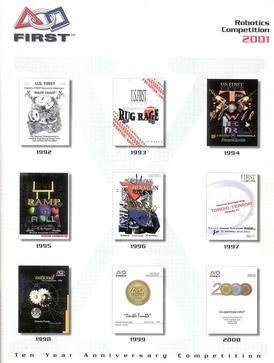
The University of Illinois Urbana-Champaign is a public land-grant research university in the Champaign–Urbana metropolitan area, Illinois, United States. It is the flagship institution of the University of Illinois system and was established in 1867. With over 53,000 students, the University of Illinois is one of the largest public universities by enrollment in the United States.
The Illini Media Company is a nonprofit, student media company based in Champaign, Illinois. The company owns several student-run media outlets associated with the University of Illinois Urbana-Champaign: the general newspaper, the Daily Illini; the entertainment paper, Buzz Magazine; the engineering quarterly, Technograph; the U of I yearbook, the Illio; and the commercial radio station, WPGU.

Wiffle ball, a team sport developed in 1953 in Fairfield, Connecticut, US is a scaled back variation of baseball designed for playing in a confined space. The sport is played using a perforated light-weight plastic ball and a long hollow plastic bat. Two teams of one to five players each attempt to advance imaginary runners to home plate, and score, based on where each batter places the ball on the field. The term Wiffle ball may refer to the sport as a whole, or the ball used in the sport. Wiffle is a registered trademark of Wiffle Ball, Inc. and was derived from the slang word whiff meaning to strike out.

The Illinois Fighting Illini are the intercollegiate athletic teams that represent the University of Illinois Urbana-Champaign. The university offers 10 men's and 11 women's varsity sports.

The Kenney Gym and the Kenney Gym Annex are two buildings located at 1402-06 Springfield Avenue in Urbana, Illinois, on the campus on the University of Illinois at Urbana-Champaign. Although the two buildings have been physically connected since 1914, they were built separately. They were jointly added to the National Register of Historic Places in 1986 under the name Military Drill Hall and Men's Gymnasium.

FIRST Robotics Competition (FRC) is an international high school robotics competition. Each year, teams of high school students, coaches, and mentors work during a six-week period to build robots capable of competing in that year's game that weigh up to 125 pounds (57 kg). Robots complete tasks such as scoring balls into goals, placing inner tubes onto racks, hanging on bars, and balancing robots on balance beams. The game, along with the required set of tasks, changes annually. While teams are given a kit of a standard set of parts during the annual Kickoff, they are also allowed and encouraged to buy or fabricate specialized parts. FIRST Robotics Competition is one of five robotics competition programs organized by FIRST, the other four being FIRST LEGO League Discover, FIRST LEGO League Explore, FIRST LEGO League Challenge, and FIRST Tech Challenge.

Zone Zeal was the 2002 game for the FIRST Robotics Competition. In it, robots playing in alliances of two competed to move goals and balls into various zones within the playing field.

Diabolical Dynamics was the 2001 game for the FIRST Robotics Competition.

The ABU Asia-Pacific Robot Contest is an Asian-Oceanian college robot competition, founded in 2002 by Asia-Pacific Broadcasting Union. In the competition robots compete to complete a task within a set period of time. The contest aims to create friendship among young people with similar interests who will lead their countries in the 21st century, as well as help advance engineering and broadcasting technologies in the region. The event is broadcast in many countries through ABU member broadcasters.

Botball is an educational robotics program that focuses on engaging middle and high school aged students in team-oriented robotics competitions. Thousands of children and young adults participate in the Botball program. It has been active since 1998 and features a robotics curriculum which focuses on designing, building and programming a pair of autonomous robots. Teams use a standardized kit of materials, document the process and then compete in a tournament in which the challenges change annually. All materials in the kits are exactly the same for every team around the world, so there are no unfair advantages. Botball teams are mostly based in the United States with over 300 teams and local tournaments in more than a dozen regions. In recent years it also holds an annual Global Conference on Educational Robotics (GCER), with an international tournament that attracts teams all over the country as well as from Mexico, Austria, China, Uganda, Poland, Qatar, Kuwait, Egypt, and many others.
The Illinois Men's Volleyball Club is a registered student organization at the University of Illinois that plays men's volleyball. This team is composed of students from the University of Illinois and is designated as a club team because the University does not have a varsity men's volleyball team. The club is based at the University of Illinois at Urbana Champaign and is a member of the Midwest Intercollegiate Volleyball Association. The club is divided into three teams divided according to level of competitiveness. All teams in the club compete only in tournaments and there are no lone matches unless they are specially scheduled. The Illinois Men's Volleyball Club was established in 1984 and quickly became one of the top collegiate men's club volleyball teams in the nation. The team has been ranked among the top ten club teams in the nation since 1997. The club placed third in the nation in 2003, 2005, and 2007 and second in 2004. Additionally, the Illinois Men's Volleyball Club hosts an annual tournament in Champaign, Illinois called the Illini 16 and co-hosts the Hoosier-Illini Classic with Indiana University. Additionally, the club hosted an exhibition match for the Blue and Orange teams for the first time in 2008. The Blue team played Purdue University while the Orange team played Illinois State University.
Chicago Engineering Design Team (EDT) is an interdisciplinary engineering and robotics organization made up of students from the University of Illinois at Chicago (UIC). It was founded in 2000 by a small group of students that wanted to use the knowledge attained in the classroom in the field of theoretical and applied robotics. EDT is divided into three major teams, electrical, software, and mechanical, that aim to bring robotic engineering to the next level. The organization participates in robotics competitions, organizes various engineering events at UIC, and promotes Science, Technology, Engineering, and Mathematics (STEM) to the community through outreach events.

Half-Pipe Hustle was the first official FIRST Vex Challenge (FVC) game, taking place in 2005–2006. In this challenge, robotics teams built robots from the Vex design kit to compete in competitions across the United States and in other nations, in matches consisting of a 45-second autonomous period, followed by a 2-minute driver control period in which the robots are controlled by team drivers using remote controls.

Engineering Hall is an administrative building at the University of Illinois at Urbana–Champaign. It is located in the south end of the Bardeen Quadrangle on Green Street in Urbana, Illinois, facing the Illini Union. Engineering Hall serves all disciplines within the UIUC College of Engineering and is well known for representing the school's colors with its orange bricks and blue roof. In addition to many offices and conference rooms, Engineering Hall also includes two computer labs and four lecture halls. Engineering Hall also houses many engineering-based student organizations in its offices.

The University of Illinois Laboratory High School, also known as Uni High or just Uni, was established in 1921 and is a laboratory school located on the engineering section of the University of Illinois campus in Urbana, Illinois. Its enrolls about 300 students, spanning five years. The school's alumni include three Nobel laureates and a Pulitzer Prize winner. In 2022, Uni High was named as a top-15 public school in Illinois by Niche and the following year rose to a top-15 public school in the nation. In 2006 and 2008, it was recognized as a "public elite" school by Newsweek because of its students' high scores on the SAT. Before the change in the SAT's format in 2016, the average SAT score was 2045, and now varies from 1400 to 1600. As of 2019, the average SAT was a 1470. The average ACT score is a 32.

The Collegiate Aerial Robotics Demonstration (CARD) is a robotics competition for college and university students inspired by FIRST. The inaugural event was held at the 2011 FIRST Championship in St. Louis, Missouri.

Student Robotics is a registered charity that runs an annual robotics competition for teams of 16 to 19 year-olds. The charity aims to foster a world where engineering and artificial intelligence is accessible to young people with a stated mission "to bring the excitement of engineering and the challenge of coding to young people through robotics". The competition is free to enter and teams are provided with all of the core electronics that they need to build a robot. To encourage creative and ingenious solutions to problems, constraints on design are kept to a minimum, and the students can build and fashion their robots with any materials they choose; this results in a wide range of quirky, original robots. The robots must operate autonomously; once they are switched on to compete no interference from the team is allowed.

Bowled Over!, released on 10 September 2011, is the 2011–12 robotics competition for FIRST Tech Challenge. Two alliances compete to score racquetballs into alliance-colored scoring goals. The name refers to two bowling balls on the field used for scoring points.
FIRST Stronghold was the 2016 FIRST Robotics Competition game. The game was played by two alliances of up to three teams each, and involves breaching the opponents’ defenses, known as outer work as well as capturing their tower by first firing "boulders" at it, and then surrounding or scaling the tower using a singular rung on the tower wall. Points were scored by crossing elements of the tower's outer works, shooting boulders into the opposing tower's five goals in order to lower the tower strength, and by surrounding and scaling the tower.
VEX Robotics is a robotics program for elementary through university students and a subset of Innovation First International. The VEX Robotics competitions and programs are managed by the Robotics Education & Competition Foundation (RECF). In April 2018, VEX Robotics Competition was named the largest robotics competition in the world by Guinness World Records.
















